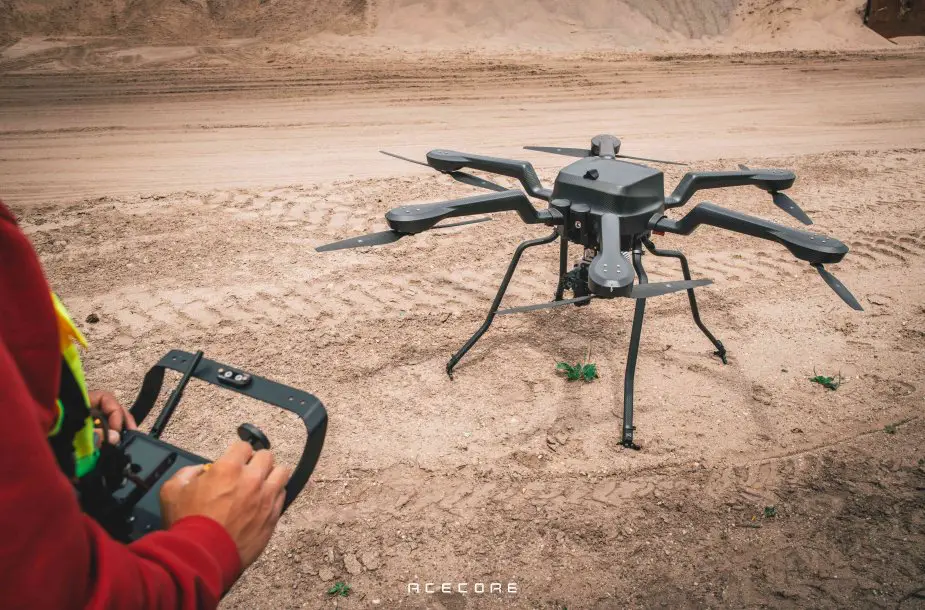Breaking news
Denmark provides Ukraine with mine-scanning Noa Acecor drones in crucial demining effort.
On July 14, 2023, the Ukrainian Minister of Defense relayed a tweet from the Norwegian Minister of Defense and acting Danish Defense Minister, Troels Lund Poulsen, announcing the delivery of six mine-scanning Acecor drones to Ukraine as part of a significant aid package worth over one billion euros. This package had previously been mentioned by the Army Recognition editorial team on May 3, 2023. The Danish support to Ukraine includes both military aid, such as vehicles and demining equipment, as well as civilian aid.
Follow Army Recognition on Google News at this link

Noa drone,thanks to its modular quick-release system, there is no limit to the amount of payload that can be used, including equipment such as Gremsy, Freefly, DJI, and LiDAR. (Picture source: Acecor)
The specificity of these mine-scanning drones lies in their advanced capabilities. The Ukrainian engineers received those modern drones designed for technical inspections of territories before demining operations. These drones utilize scanning technology to detect anomalies in the ground, water bodies, and on the surface, thereby enabling the Ukrainian sappers to remotely survey territories and identify locations of explosive objects.
The Noa drone is a versatile remotely operated aerial vehicle designed for commercial use. It is equipped with six customized oversized Acecore rotors, allowing the Pilot in Command to fly for extended periods with various payloads. Thanks to its modular quick-release system, there is no limit to the amount of payload that can be used, including equipment such as Gremsy, Freefly, DJI, and LiDAR. The flexibility in battery options enables users to balance the weight of the payload and battery for optimal flight efficiency.
To ensure effective utilization of the drones, Ukrainian deminers underwent training in Denmark. Each team consists of two members - a pilot and an operator. They received training on the technical components of the drone system and practiced its operation in real field scenarios.
These drones have been urgently requested by Ukraine due to the Russian preparation of a counteroffensive by heavily mining large portions of the territory. According to numerous Ukrainian deminers, these minefields cover vast areas, hindering the Ukrainian counteroffensive efforts significantly. Russia possesses a vast arsenal of various mines, including anti-tank and anti-personnel mines, with subcategories like wire-triggered mines, jumping mines, and plastic butterfly mines. The latter are especially gruesome, as doctors struggle to locate and remove shrapnel from soldiers wounded by such mines. To date, mines have caused more casualties among Ukrainian troops than direct artillery fire, which previously was the primary cause of injuries among Ukrainian soldiers.
The Russian defensive tactic aims to prevent any deep breakthrough, as armored vehicles, though capable of protecting the crew, often end up immobilized by continuous explosions or isolated at the front lines. In such situations, Russian artillery concentrates its fire on exposed vehicles and troops in open terrain.
Hence, Western countries have increased the delivery of various demining equipment. Initially, the focus was on individual demining tools; however, the high casualty rates among these deminers and the slow progress prompted a shift towards supplying heavy-duty vehicles as the German Wisent 1 and the MIRPZ, such as tanks equipped with demining systems for example the M58. Moreover, terrestrial (GCS 200)and aerial drones, such as the present Danish Acecor army drone, are also being delivered. This strategy aims to achieve two main objectives: expediting the demining process and ensuring the safety of personnel operating in exposed terrain.



















